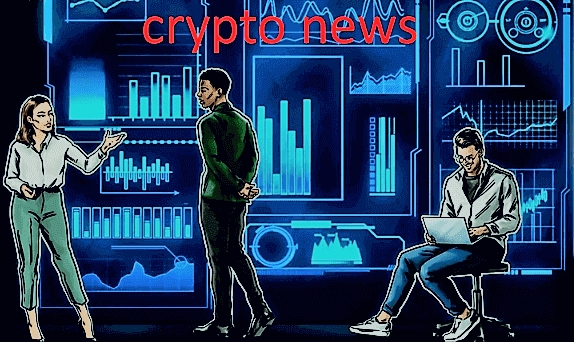In the wake of FTX’s downfall, growing concerns about Digital Currency Group threaten to kick off the next wave of bad debt and bad action in the crypto space. If nothing else, the newest edition of the crypto of "have the assets they say they do" should remind traders, investors, and users of all creeds that any reliable element in the web3 is a bug – not a feature.
However, having cleansed itself of a handful of interfaces, opaque centralized parties, and accounting fraud, the crypto space remains balanced with more than $100 billion in reliably backed stablecoins. To prevent another unexpected event of the Black Swan from reducing trust in Web3, you should redesign stablecoins according to the principles of decentralization, transparency, and community governance before it is too late. I dare say that losing confidence in even one stablecoin could lead not only to the worst bank flight of cryptocurrencies, but also a ten-year setback in the public arena.
Boring but lively: payments in web3
Let's face it: as enticing as many of The Web3's emerging tools and platforms promise to be, payments will always be the case of the number one use of the currency. And while a significant demographic of early web3 users may indeed have enough risk appetites for the untapped volatility of cryptocurrencies, gambling will never be a desirable pastime for most economic agents in any community.
We all know the narrative so far: Bitcoin and Ethereum have introduced deep, decentralized systems for property owners that put power back into people's hands. But managing the unprecedented volatility of their native assets – for which there seems to be no purpose in mind – remains a major barrier to adoption. For this reason, Tether's USDT stablecoin appeared and ran to a valuation of $2 billion in 2017, and why the stablecoin sector has accumulated a valuation of one hundred billion dollars in the five years since then. This is also why stablecoins are poised to grow more than any other web3 sector in the next ten years.
Why are stablecoins still the next big thing?
Stablecoins are the cryptocurrency that is pegged to the dollar as the dollar is to commodities. With no one questioning oil's role as a store of value or its industrial use, many are betting on daily price fluctuations. However, there is no chance for oil to become a global medium of exchange.
Just like oil, volatile native tokens generate a significant daily trading volume for their roles, fueling a number of web3 platforms on the rise through DAO participation and other use cases. Just like dollars, stablecoins complement these native tokens by facilitating seamless value transfers within and within their web3 ecosystems. On the road to adoption, stablecoins play an indispensable role in supporting the development of web3 platforms and protocols with effective and familiar media for global payments that do not require a return to the cumbersome and costly legacy financial system.
In this sense, stablecoins are the web3 sap, and will become, over the next decade, inextricably linked and existentially related to its survival. That is, for better or for worse, the survival and success of the stablecoin sector will become as important – or more – than those of the web3 industry in general.
That is precisely why we must ensure that we achieve stablecoins even before we go further down the path of widespread adoption.
DeFi: the only recipe that works
Custodial stablecoins solve the problem of cryptocurrency volatility, but only at the cost of reintroducing the unwanted components that crypto was designed to eliminate: centralized institutions, opaque reserve management, and painfully poor reporting.
There is no doubt that stablecoins such as USDC and USDT Tether served their purpose in lifting the much-needed stablecoin sector from scratch at a time when DeFi was in its infancy. But, if the old financial system had been able to curb human greed, the 2008 financial crisis would not have occurred. To this end, the Bitcoin arena, crypto, and DeFi were not born from its ashes. Hence the need for transparency and unreliable regulations.
As 2022 draws to a close, the prescription for interoperable, transparent, code-governed stablecoin protocols is well established. The range of smart contract modules, oracle, DAOs and DeFi has already proven their ability to produce functional and stable value supplements for volatile audio money instruments BTC and ETH. Defi removes the stubborn exchanges that would have lurked between the benefits of decentralization and the inevitability of low-volatility credit instruments for payments. More powerfully, on-chain DeFi tools not only allow users to monitor stablecoin reserves in real-time, but also allow DAO members to identify and adjust their risk management practices.
Thus, communities that oppose risks can decide for themselves whether to allow fractional reserves, request one-on-one reserves, or request over-collateralization of 150% or more, as many thriving DeFi platforms do today. It shouldn't be a surprise that over-collateralized DeFi platforms have surpassed their now-defunct Cefi and CEX counterparts.
Restoring decentralization and transparency in the stablecoin sector should be the main objective of DeFi. There is no case of greater use for DeFi – nor any that is more urgently requested.
If we use DeFi LEGOs to realign stablecoins with the foundational principles of cryptocurrencies, we can immediately prevent the emergence of disastrous topics such as FTX and prepare web3 for adoption, providing a low volatility mechanism.
The alternative, unfortunately, might just be a native digital rendition of the 2008 financial crisis coming to a blockchain near you.





